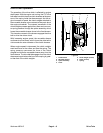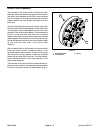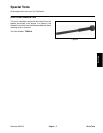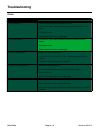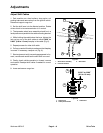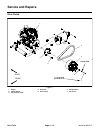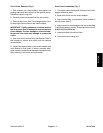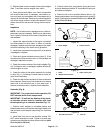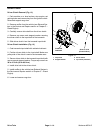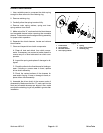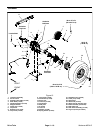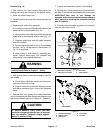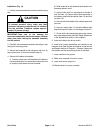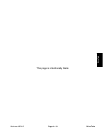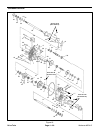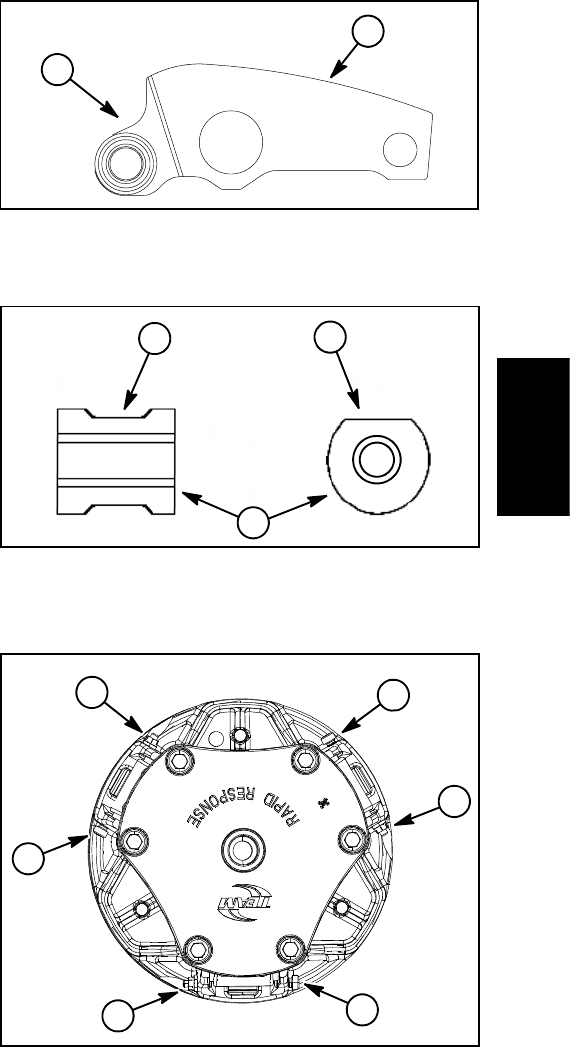
Workman MDX--D Drive TrainPage 4 -- 13
5. Slide shoulder screw from each of the clutch weights
(item 7) and then remove weights from c lutch.
6. Clean all dust and debris from clutch components
with a soft bristle brush. If necessary, use water to re-
move dirt and dry immediately with compressed air to
remove all dirt and water. Removeany remaining debris
with a fast drying contact or brake parts cleaner. Focus
debris removal on and around moving clutch compon-
ents.
Inspection
NOTE: Ifdriveclutchwearordamageoccurs,clutchre-
placement may be necessary. Refer to your parts cata-
log to identify individual drive clutch components that
are available.
1. Inspect the tapered ends of the engine crankshaft
and fixed sheave of drive clutch. If either is severely
damaged, replace component as damage to the taper
will allow loosening of the clutch during operation.
2. Inspect the compression spring (item 3) and replace
if damaged or fatigued.
3. Clean and inspect shoulder screws (item 5). If the
shoulder area of the screws is worn or if the threads are
damaged, replace the screws.
4. Check the contact surface of the clutch weights (Fig.
10). If surface is worn or damaged, replace all three (3)
clutch weights as a set.
5. Check t he rollers in the spider assembly for binding
or wear (Fig. 11). If binding or uneven wear is found, re-
place clutch assembly.
6. Check the belt contact surfaces of the movable and
fixed sheaves. Remove any belt material from sheave
faces with a fine abrasive pad or fine steel wool. If
sheave surfaces are worn, replace clutch assembly.
Assembly (Fig. 8)
IMPORTANT: For proper drive clutch operation, DO
NOT lubricate drive clutch components.
IMPORTANT: To maintain the balance of the clutch,
all shoulder screws must be installed with their
threads pointing in a clockwise direction (Fig. 12).
1. Position clutch weights to moveable sheave and
slide shoulder screw into sheave and weight. Make sure
that shoulder screw threads are pointing in a clockwise
direction.
2. Install new lock nuts on the shoulder screws. DO
NOT reuse removed lock nuts. Tighten nuts until they
contact screw shoulder and then torque nuts from 40 to
50 in--lb (4.6 to 5.6 N--m).
3. Position limiter shim, compression spring and cover
to clutch. Make sure that the “X” mark cast into the cover
and spider are aligned.
4. Secure cover to the movable sheave with six (6)
flange head screws in a crossing pattern and in three (3)
steps. Final torque on screws should be from105 to 120
in--lb (12 to 13.5 N--m).
1. Clutch weight 2. Contact surface
Figure 10
2
1
1. Roller
2. Weight contact surface
3. Roller uneven wear
Figure 11
2
1
3
1. Shoulder screw head 2 . Lock nut
Figure 12
2
1
1
1
2
2
Drive Train



